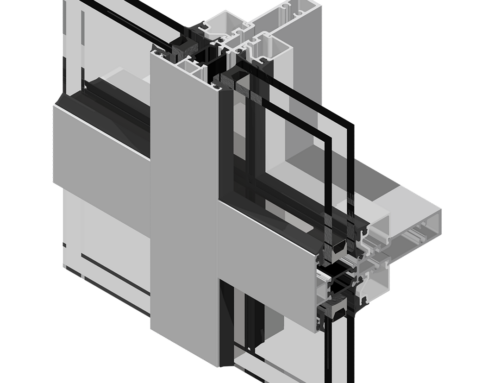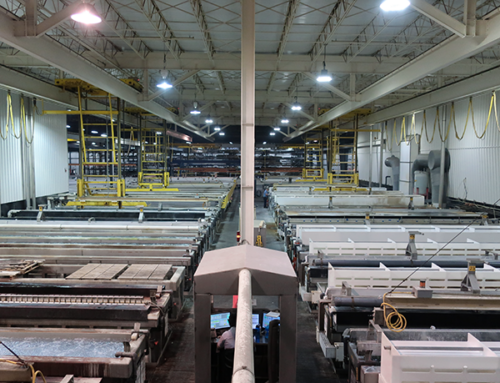5 FAQs on door corner construction
 Extruded aluminum is the material of choice for commercial doors and entrances. Its popularity is due in part to its excellent track record: There are millions of aluminum entry doors installed across the country, and some have been in service since the 1960s.
Extruded aluminum is the material of choice for commercial doors and entrances. Its popularity is due in part to its excellent track record: There are millions of aluminum entry doors installed across the country, and some have been in service since the 1960s.
A door is one of the hardest-working elements of a building: a moving part with loading typically concentrated on two small hinging sites. They are subjected to use and abuse by humans and natural forces. To survive, they must be engineered and manufactured for high durability. An aluminum door, usually dominated by glazing, presents a stringent engineering challenge because the outer perimeter of the door must do all the structural work.
Here are five frequently asked questions about commercial doors with answers from industry experts at Alumicor, which has been manufacturing aluminum entrance systems since 1959.
1. Why is door corner construction important?
The thin outline-framework of aluminum is made of vertical members called stiles and horizontal members called rails, which are joined at the corners. The strength of a door depends greatly on the strength of its corners. When evaluating and selecting doors for a project, consider their corner construction.
2. What types of extruded aluminum door corner construction are available?
Most aluminum doors are made using one of three methods:
- Tie-rod construction uses steel rods across the top and bottom of the door. The rods are anchored in the vertical stiles and thread through the horizontal rails, tying the stiles to each other with the rails gripped in between. The rods have threaded ends, and are secured with locknuts on both sides.
- Welded corners have a bracket that is screwed onto the stile and then welded to the rail.
- Shear clip corners have a small piece of aluminum channel fastened to the stiles and then bolted to the top and bottom rails.

3. Which type of construction is the most durable?
According to more than 75 years of data and experience, tie-rod and welded corner construction methods are equally durable. Alumicor offers both options. Some manufacturers have suggested that welded corner construction is more durable, but we believe this is not true. Through the decades, we have no reports of tie-rod failures.
4. Does one type have any advantages over the others?
Yes. For the owner, tie-rod construction offers greater flexibility than welded corners. If the door ever needs to be modified, or if it is damaged and parts need to be replaced, the tie rods can be unfastened and the door taken apart without diminishing its structural integrity, durability or finish.
If, for example, the floor height is changed by an overlay, and the door needs to be cut down, it can be modified by an Alumicor Dealer at far lower cost than replacing the entire door. A welded corner door generally cannot be trimmed this way, and replacement is the only option.
Welded-corner doors have advantages for the manufacturer, since they eliminate the material costs of the tie rod and offer greater possibilities for automated manufacturing. Shear clip doors, similarly, have lower materials cost. However, these savings are not typically passed to the customer.
5. What are the applicable performance standards?
All doors, no matter which type of corner construction, should meet certain standard industry performance tests. These include:
 ASTM E283/E283M Standard Test Method for Determining Rate of Air Leakage Through Exterior Windows, Curtain Walls, and Doors Under Specified Pressure Differences Across the Specimen
ASTM E283/E283M Standard Test Method for Determining Rate of Air Leakage Through Exterior Windows, Curtain Walls, and Doors Under Specified Pressure Differences Across the Specimen- ASTM E330/E330M Standard Test Method for Structural Performance of Exterior Windows, Doors, Skylights and Curtain Walls by Uniform Static Air Pressure Difference
- AAMA 1304 Voluntary Specification for Determining Forced Entry Resistance of Side-Hinged Door
- NFRC 100 Procedure for Determining Fenestration Product U-factors
There are additional tests for thermal performance, hurricane resistance and blast resistance. Remember to verify that the most recently published standard is being referenced and that the manufacturer’s test reports are valid.
SHARE



